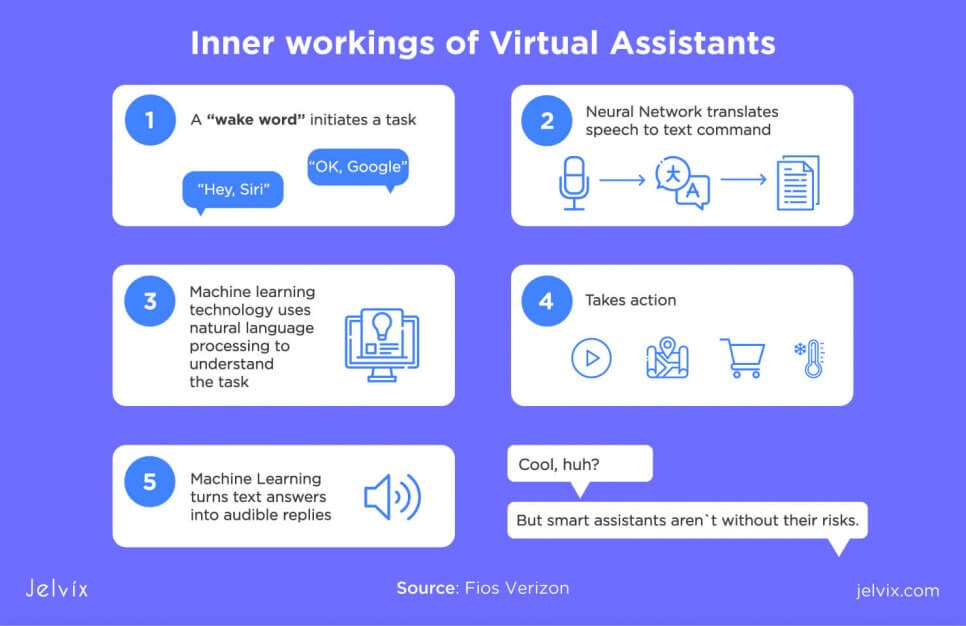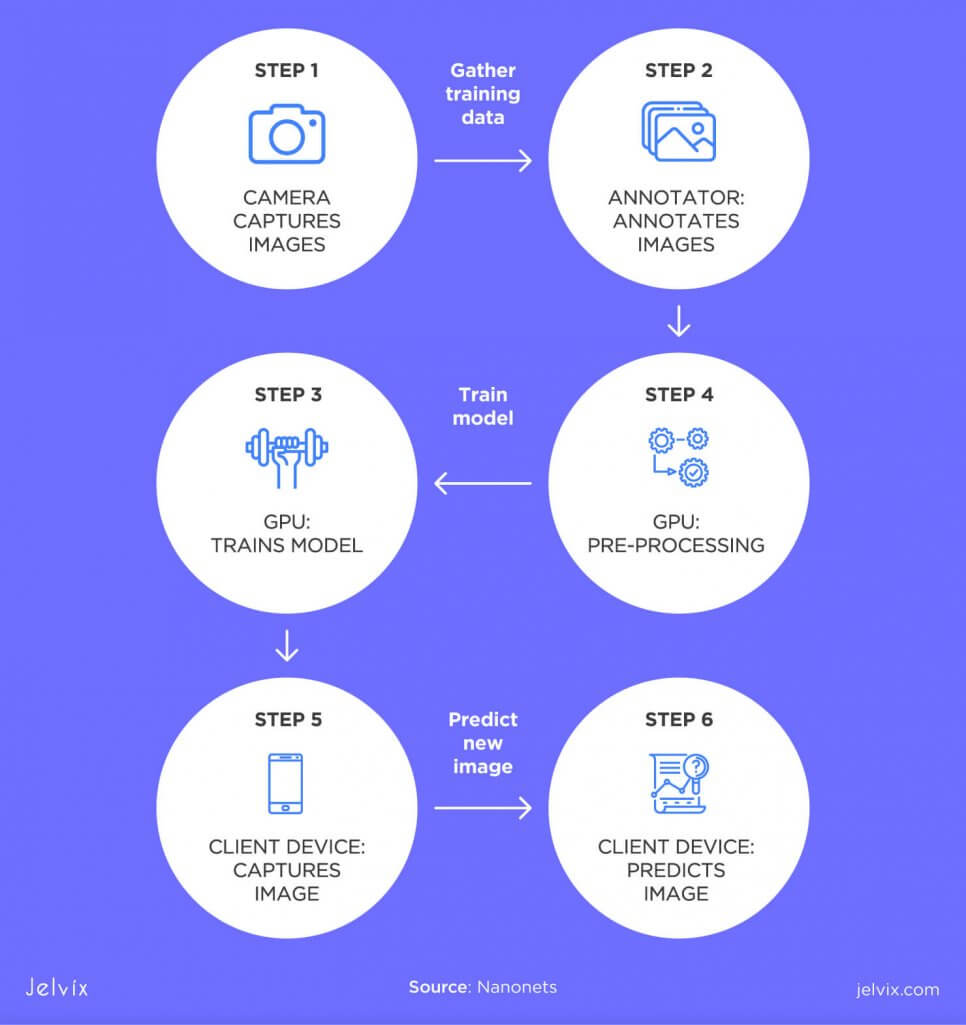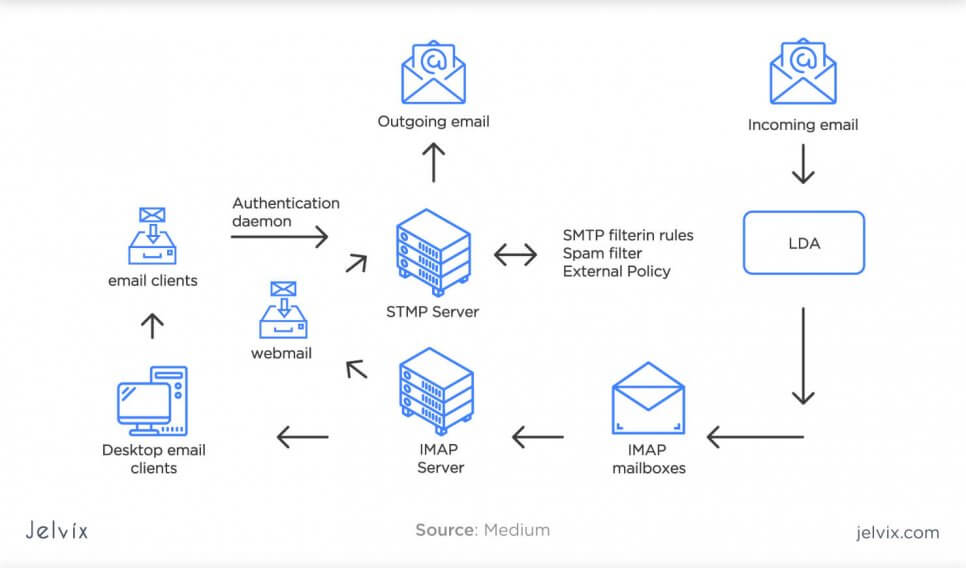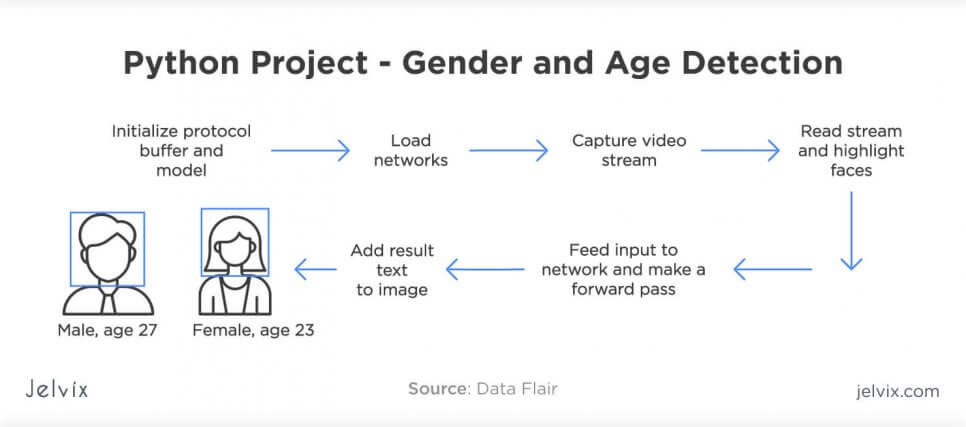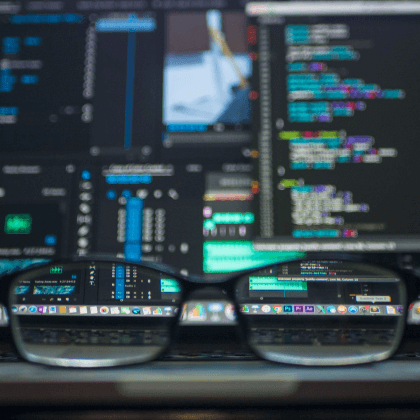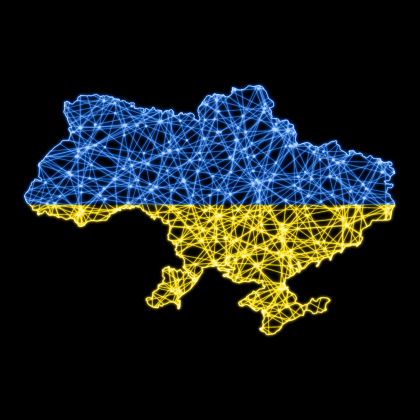Machine learning is the leading technology for artificial intelligence and big data implementation. Its use is exceptionally broad: whenever businesses implement innovative technology, they usually consider ML as well because it is a reliable way of assuring algorithms’ continuous improvement.
Netflix, for instance, saves more than 1 billion dollars each year due to its powerful ML algorithms, which lie at the core of the personalized content catalog. The selection system continuously improves without human aid, offering a better customer experience every day.
Google designed a machine learning system that learned to build AI better than top company developers. The technology is also a long-term resource saver since it improves automatically and constantly delivers better results.
Characteristics of Machine Learning
Machine learning is powered by insights. The pace and quality of algorithm improvements rely less on computing power or impeccable code and more on high-quality data. If a company knows how to collect information from its users, monitor on-site interactions, and listen to social media posts, it can achieve remarkable results – as shown by Google, Amazon, Netflix, Microsoft, and Facebook.
Let’s take a look at machine learning applications in multiple industries, from digital businesses to industries that are still transforming, to understand the benefits of this technology.
Image recognition
With machine learning, software can be trained to detect objects and features in images. Neural networks analyze vast libraries of images pixel by pixel. Each neuron offers insight after validating its piece of content, and the network unites millions of these conclusions into a cohesive analysis. Developers use open image databases to teach transfer learning systems to recognize these images. The biggest datasets for ML image recognition are Coco and ImageNet.
Machine learning examples in real life include facial recognition technologies that analyze social media data for insights, as well as tools that allow companies to embed AI-driven image recognition into their software.
Examples of machine learning in image recognition:
- Clearview – A facial recognition technology that analyzes data from social media to get insights on people’s faces and get their data. Despite many privacy controversies, the app is often used for crime prevention and police work.
- Deepomatic – A computer vision software that allows businesses to deploy image recognition AI in their software.
- Visenze – An online e-commerce platform that allows customers to upload pictures of favorite products and look for similar items in stock.
Social media analysis
Machine learning can analyze millions of posts on platforms like Facebook, Twitter, and Instagram. Thus, businesses keep up with customer feedback, track their brand health, and improve their reputation. Machine learning for business applications includes social media sentiment analysis, helping companies understand how their brand is perceived.
Machine learning allows systems not only to recognize words but also to understand the context behind them. For instance, the word “orange” can be used to describe a color or a brand name. As a business owner, you’d want to see the posts that fall under the second category – and ML makes this possible by analyzing the context of each message.
Emotional Recognition
AI and ML analyze the context in which the brand’s name is used and compare a single message to millions of similar posts. Complex algorithms track the differences between happy, unhappy, interested, or sarcastic.
Unsupervised Detection
Businesses use machine learning to know what their customers care about. Machine learning isn’t limited to pre-set values; it can display all results that fit the general context, not just what the business owner searched for. It’s possible to get unexpected results that fall out of your expectations.
Examples of machine learning in social media analysis:
Lionbridge – This sentiment analysis tool provides users with insights based on social media posts in more than 300 languages.
Scale AI – A data analysis company that processes information from social media, online searches, posts, and databases using AI and ML algorithms.
Medallia – A platform used to analyze customer feedback, not limited to just social media posts, although it is often used for social media monitoring.
Smart assistants
Smart assistants are looking for new ways to interact with users and provide a better experience. They need to analyze personal data, process voice requests, and automate daily tasks. Without a powerful learning system, the assistant will not be able to adapt to changing user needs.
With machine learning, a home assistant can process and categorize all input data and possibly reuse it later. With natural language processing, an assistant collects and analyzes voice messages from users, finds logical relationships between phrases, and understands what output corresponds to the request.
Machine learning use cases in the industry:
Machine learning allows the smart assistant to use all collected data to improve their pattern recognition skills and be able to address new needs. Amazon constantly refines machine learning algorithms for Alexa.
The main ML method used by the system is active learning – the system uses data to learn new skills automatically, but if it’s impossible, the software will identify areas where the help from human professionals is required. This way, development teams are always aware of the tool’s blind spots and know where to step in.
Additionally, scientists introduced a new ML method – transfer learning, and Amazon implemented it in Alexa. Developers can reuse skills from one domain to help machines acquire competencies in a different field. For example, if the system knows how to find restaurants, it will quickly pick up the skill of finding bars and supermarkets.
News Classification
As the amount of produced content grows exponentially, businesses and individual users need tools that would classify and sort out the information. Machine learning provides a strong basis for such technology. The algorithms can run through millions of articles in many languages and select the ones that are relevant to user interests and habits.
Also, machine learning could potentially recognize fake news and evaluate the trustworthiness of the sources. First, the network has to go through news that is confirmed to be fake and compare it with those that are known to be legitimate. After determining key differences and detecting subtle patterns, the system will be able to develop complex differentiating algorithms.
Examples of machine learning in news classification:
- Aylien – An ML tool for assessing news legitimacy and personalizing news feeds. The tool also evaluates the material quality and strives to gather the best updates from millions of outlets and blogs.
- TagMyNews – An active GitHub project that uses Python-based machine learning for news classification.
Video Surveillance
Analyzing video files is a more complex task than working with text or images. The information is dynamic and changing in real-time, which is why it’s harder to extract information from video files.
Machine learning can help develop complex algorithms for video recognition. At first, using human supervision, the system will learn to spot human figures, unknown cars, and other suspicious objects. Soon, it’ll be possible to imagine a video surveillance system that functions entirely without human supervision.
Examples of machine learning in video surveillance:
- OpenVINO – A toolkit powered by video recognition and action detection designed to optimize and accelerate deep learning models for various hardware platforms, including applications in smart classrooms and other environments.
- Alpha Pose – A real-time open-source action detection tool.
Optimization of search engine results
Machine learning algorithms can learn user habits and interests by analyzing search statistics. The ranking algorithms won’t rely on metatags and keywords but, instead, will analyze the context of the page.
Search engines may train research recognition systems with expertise in particular fields. For example, AI trained for a specific task will analyze healthcare-related pages but not entertainment content.
Examples of machine learning in SEO:
- Google RankBrain – A search engine algorithm that uses deep learning to analyze page contents in detail. The algorithms determine the page context, not simply rely on meta-tags to define the relevance.
- TinEye – A reverse image search engine powered by machine learning.
Email analysis
As machine learning has proved to be an essential technology in smart text analysis, it’s no wonder that it has immense potential in spam detection and filtering. Machine learning techniques can analyze and compare legitimate emails with spam and determine differences even in cases where humans would easily make a mistake.
Examples of machine learning in email marketing:
- SpamTitan – A web platform for Microsoft Office 365 that uses machine learning to identify fishing, zero-day attacks, and advertising spam.
- MailWasher – An email monitoring tool that spots spam and offensive vocabulary. The software constantly improves its recognition skills with machine learning and big data algorithms.
Speech Recognition
Speech recognition tools use machine learning to adapt the software to new idioms, slang, and phrases. At first, developers need to teach the system the most common words and phrases, but then the tool will learn new set responses automatically based on the data received from interactions with users. Two main kinds of speech recognition actively use machine learning.
- Automated speech recognition (ASR) – The process of converting speaking input to written text.
- Natural language processing – The process of analyzing text contents to understand their context and meaning.
Machine learning helps the software to adapt to dynamic speech patterns. Users use idioms, slang, and abbreviations, and to stay flexible, a system needs to learn all these altered versions. This is where machine learning is essential: even theoretically, a human team can’t teach millions of speech variations to the software manually. If the system trains itself, the task becomes much more manageable.
Examples of machine learning in speech recognition:
- Google’s Machine Learning Audio Recorder – Users can label particular sections of audio recordings and transcribe conversational audio.
- Looking-to-Listen – The software separates audio tracks from background noise, music, instrumentals, etc.
Cybersecurity
New security threats emerge all the time, and human experts can’t keep up with all the updates. Machine learning, on the other hand, is much more flexible: algorithms use data from millions of sites and learn about new malware from all over the world.
Its detection of cybersecurity threats are also immediate: the system will recognize the threat, analyze similar cases, and take measures to secure the website or application. Machine learning allows businesses to be up to date with malicious practices and predict safety issues before they even come up.
Examples of machine learning in business security:
- Google – The company invests in machine learning to secure Android and detect threats in real time.
- Amazon – The company has acquired Macie, an ML security startup that uses machine learning for cloud security.
- Microsoft Threat Protection – The platform uses machine learning to detect safety risks and breaches, as well as to investigate these risks immediately.
Customer Service
Machine learning algorithms analyze customer behavior on the website by collective qualitative (common actions, interests, favorite products) and quantitative (time spent, the number of visited pages, age, gender, etc.) data. This information is then processed to deliver a detailed report on client needs. From this data, chatbot developers can know which issues to focus on.
Initially, chatbots require human supervision for their learning – developers need to check if the outputs are understandable and relevant. As soon as several dozens of responses are confirmed, the chatbots can learn on their own from daily interactions with clients, getting better with each dialog.
Examples of machine learning in speech recognition:
- Answer Bot by Zendesk – This machine learning bot recommends relevant help articles to website visitors.
- Mitsuku – A conversational chatbot that uses machine learning, natural language processing, and AI to understand human conversations and create relevant answers. The chatbot won the Turing Test five times and was featured in BBC, Wired, New York Times, and other outlets.
- Sephora Bot – The bot offers answers to pre-set questions. The collection of these questions is always growing because machine learning processes new user requests.
- Watsonx Assistant – A conversational AI chatbot developed by IBM that uses machine learning for speech recognition.
Copyright Identification
Companies can use ML neural networks to detect cases of copyright infringement and determine the rightful owners of creative content. Neural networks can analyze millions of texts, images, and videos, detect all copies of a single file, and track its origin.
Detecting that an exact copy of context has been used without permission is fairly easy. The complications arise when determining if there is an element or a theme of an image, song, or text reused without permission. In such cases, machine learning algorithms need to dissect the content and understand their context.
However, deep learning is equipped to determine even subtle patterns and detect content that isn’t technically identical but is still likely to violate copyright laws.
Examples of machine learning in predictions:
- EverString – A predictive analytics software that breaks business target audiences into segments based on their behavior, interests, and needs.
- Infer – Software performs predictive modeling and provides insights on the lead’s position in the sales funnel. The company finds out the average frequency with which a lead is converted into a customer and determines the probability that a given lead will become a client.
Product Suggestions for e-Commerce
“Recommended” engines, powered by machine learning, are capable of analyzing customer behaviors, purchase history, and preferences to come up with relevant product suggestions. With each new user, the system receives new data and improves its prediction skills.
Examples of ML-based product suggestions:
- Netflix – The platform suggests TV shows and movies that could interest the user based on previous watching history.
- Recombee – A startup that provides an API for businesses that want to implement machine learning recommended engines on their websites.
Healthcare Online Services
The process of determining a diagnosis, planning treatments, managing follow-up appointments, and keeping track of a patient’s progress can be significantly simplified with machine learning. The treatment process is influenced by hundreds of factors, and doctors can’t always take all of them into account.
The technology finds patterns between patient’s scans, history, and symptoms. Also, it determines the precise diagnosis, taking into account hundreds of factors, many of which could be easily missed by human medical professionals.
Of course, there are many challenges when it comes to the regular implementation of machine learning in healthcare. One of the issues in machine learning is that the technology needs to be well-tested and refined before it can take on the responsibility of diagnosing and treating patients. This can only be possible if medical and development expertise are brought together in continuous collaboration.
Machine learning business applications in healthcare:
- Advata – A predictive healthcare platform that uses data analytics to provide insights for healthcare professionals, alerting them to likely health issues and helping to prevent infections and disease complications.
- PathAI – A machine learning diagnosis platform that analyzes patients’ histories and scans to make accurate predictions on the disease’s origin and symptoms.
- InnerEye – A platform developed by Microsoft designed to distinguish between tumors and healthy tissues for precise cancer diagnosis.
Age/gender identification
With the rise of social media and video content, organizations and businesses are interested in identifying people’s age and gender from their pictures, style of posts and messages, as well as voices. Machine learning technologies for age and gender identification have multiple applications in fields such as law, access control, security, and others.
Examples of machine learning in age and gender analysis:
- Quividi – A facial recognition application that uses artificial intelligence and machine learning to analyze online users’ faces and provide precise insights for targeted ads.
- AgeBot – An Android application that provides users with an estimate of their age and gender based on pictures, videos, and real-time images from a smartphone camera.
Learn more about the main stages of product development lifecycle to build a sustainable product.
Reasons to Implement Machine Learning in Your Industry
The use cases discussed in the article can be brought to multiple industries, from agriculture to entertainment. Any business that works with data can use this information to get deeper insights on efficiency, automation options, and determine its reputation. Let’s summarize the main benefits of machine learning that are valid regardless of the field in which you work.
Improved Sales Process
Machine learning tracks sales history to determine the factors that make the difference between a deal’s success or failure. It then figures out your client’s responses to current promotion strategies and uses these insights to suggest actionable improvements.
Machine learning isn’t limited to a certain audience sample. You don’t have to gather a group of respondents and interview them – machine learning will deliver information from conversations all over the world, filtering the main messages.
Simplified Documentation
Organizing and overseeing your business’s organization, profits, interactions with clients and partners, as well as investments and returns, involves a lot of data. Data science, powered by machine learning, allows business owners to support their decisions with tangible data collected from every processed order, closed deal, and customer interaction.
Whatever you are working on today, the system will remember your progress and record the data. It will interpret the results, determine the efficiency of your work, predict future profit, and define possible risks.
Solving Security Risks
Regardless of which industry you work in, if you are handling sensitive data, consider implementing machine learning into your security systems. Hackers often plan security threats in the long term, and you might not be aware that there is a disaster that’s already in the making.
Security software with machine learning and AI will analyze the state of your business security while you are handling higher-priority tasks. If there is as little as suspicious behavior or an unprotected connection, the system will respond to these risks and take measures to eliminate the threats. Systems equipped with ML will get better with every detected security threat, and your organization’s security will grow exponentially.
Saving Time and Human Resources
The main benefit of implementing machine learning is that it assures continuous software improvement. It’s enough to invest once in developing a self-learning tool and spending time to customize it in the first stages, but you will see the results for years to come.
Machine learning will save your developers and testers a lot of time. They won’t have to write each functionality or interface update – the software will change its code, add new skills, and adapt to customer needs. The team can oversee the process, but it’s not necessary.
Machine learning is a win-win technology for scaling businesses. To work more efficiently, the ML system needs larger amounts of better data. As the company grows and receives access to more clients and patterns, the machine learning system will thrive and form new insights. Again, we’ve seen this happen to Netflix: its machine learning prediction system saves the company billions of dollars as the global user network keeps growing.
Final thoughts
Machine learning is a long-term investment that delivers continuous improvements as your business grows. The software, equipped with ML algorithms, will become better with every next client interaction, analyzed database, or text file. The more it works, the more precise its insights become, which is a perfect success formula for scalable businesses.
Along with its efficiency, machine learning appeals to businesses with its universality. The best applications of machine learning prove that ML can be adapted to improve any type of process, especially those that have to do with data. With the rise of big data and automation, machine learning becomes a must-have, because human teams can no longer catch up with ever-speeding-up market requirements.
To start preparing for your business growth in advance, you need a reliable tech partner with expertise in machine learning, data science, and artificial intelligence. An experienced development team will develop an efficient self-learning system that corresponds to your business needs and delivers continuously improving results.
Our team is ready to share our machine-learning expertise and bring innovation to your industry. Contact us if you would like us to develop a smart self-improving tool that corresponds to the needs of your team, market, and customers.
Need a certain developer?
Use our top talent pool to get your business to the next level.




